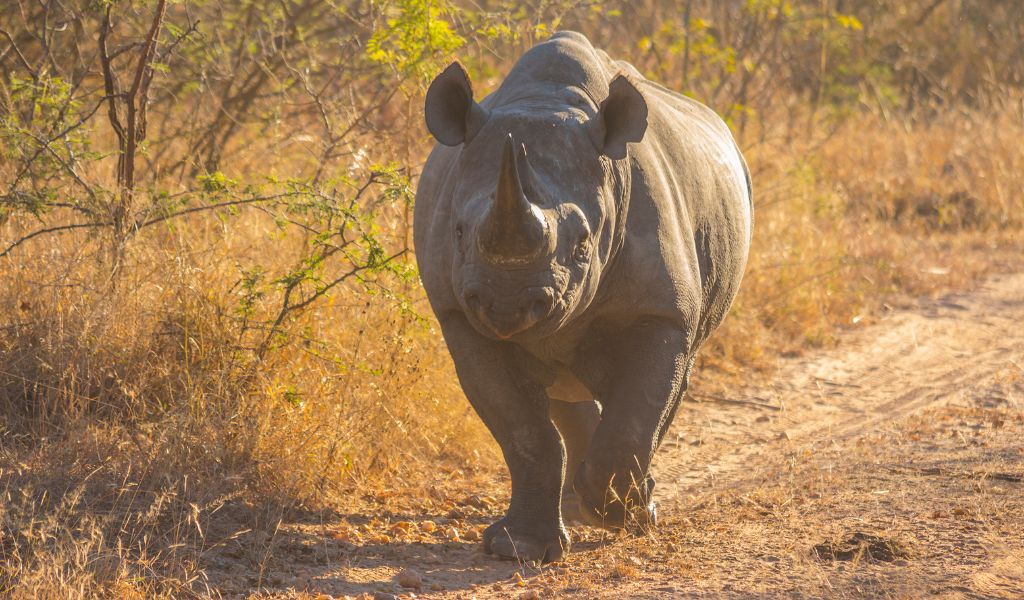Using Genetic Factors to Improve Rhino Management

Editorial Note: Undertaking both applied and basic research on wild rhino populations, as well as those in captive breeding programs, is an essential aspect of rhino conservation. The International Rhino Foundation (IRF) is the only organization to provide funding strictly for rhino research. IRF distributed nearly $300,000 in funding to nine worthy rhino studies in 2023.
These grants targeted key areas that address some of the greatest challenges those working to conserve rhinos face in maintaining healthy, self-sustaining populations that will survive well into the future. Below is a blog written by one of IRF’s grantees, the University of Pretoria in South Africa, summarizing their research to better monitor genetic diversity in black and white rhinos to ensure healthy populations across Africa.
Both white and black rhinoceros species are under increasing threat from poaching, with more than 12,000 rhinos killed in Africa since 2008. Despite extensive anti-poaching efforts and demand reduction programs in consumer countries, poaching continues. As a result, managing the remaining populations to maintain genetic diversity is critical to ensure their ability to adapt to environmental changes and reproduce effectively.
The Rhino DNA Index System (RhODIS), launched in 2010, is a reference database that uses Short Tandem Repeat (STR) marker-based DNA profiling to support forensic investigations of rhino-related crimes. It includes genetic profiles from most African black and white rhino populations, as well as stockpiled horns from Namibia and South Africa. RhODIS provides a vital traceability tool for wildlife enforcement and its DNA match evidence has been instrumental in securing convictions in South Africa and internationally.

In 2012, South Africa’s Department of Environmental Affairs – now the Department of Forestry, Fisheries and the Environment – introduced regulations requiring DNA collection from rhinos that were translocated, dehorned, notched or hunted. DNA sampling was also required for rhinos that died from natural causes or illegal hunting. Samples were collected using designated kits to maintain chain-of-custody protocols and the resulting DNA profiles were added to RhODIS. Namibia’s Ministry of Environment, Forestry and Tourism implemented similar regulations. These measures significantly expanded the database, which exceeded 180,000 samples by 2024, forming the foundation of national rhino DNA tracking systems used to trace individual rhinos, stockpiled horns and the origins of seized rhino products.
Historically, rhino populations were shaped by natural dispersal, but human activity has fragmented populations and disrupted natural selection. Monitoring the genetic diversity of small rhino populations is crucial to detecting trends that could lead to genetic decline. This is particularly relevant for black rhinos, where small founder populations are often established in private conservancies to expand their range and increase numbers. Once a population reaches carrying capacity, individuals must be relocated to prevent inbreeding. Selection for translocation has traditionally relied on visual assessments and local knowledge of rhino managers.
This project, supported by IRF, aimed to enhance the process by developing a method to identify individuals that are least related to others, genetically diverse and have minimal inbreeding. These factors were combined into a single genetic value, simplifying comparisons and supporting selection decisions. This genetic value also provides a way to quantify the genetic loss caused by poaching.
To further support conservation efforts, the project developed RhODMAPP (RhODIS Management of Animal Populations Portal), a web-based system that utilizes RhODIS population data. This tool visually presents genetic information, allowing managers to make informed decisions about population management, founder selection and translocations. By leveraging RhODIS data in this way, RhODMAPP helps ensure the long-term genetic health of rhino populations.
